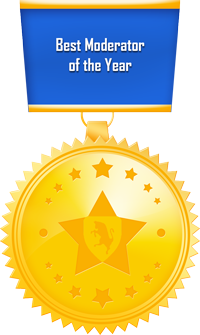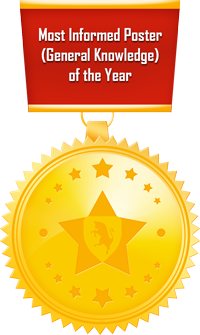The Decade of Juventus
As the decade comes to a close, there is only one club that dominated Serie A. Emmet Gates looks at how Juventus went from flops to eight-in-a-row Scudetto winners.
When looking back over the recent history of calcio, at which teams represented a decade best, you could, reasonably, assign it as follows: the 1980s could be shared between Juventus and Napoli, the 1990s viewed through the prism of Juve and Milan, the ‘00s belonged to Inter, and to a lesser extent the Rossoneri. The 2010s, well, there’s no argument.
And as the decade lives out its final days, it stands as an anomaly; one of the few in which one side, rather than several, best encapsulated it. No team since the mythical Grande Torino side of the late 1940s has dominated Italian football to the degree which The Old Lady have run roughshod over the opposition in the last decade. Juve’s dominance is startling, considering the position they found themselves in at the beginning of the 2010s.
What makes Juve’s supremacy all the more remarkable is that this wasn’t due to an injection of oligarch money, or through a nation state benefactor. Their approach was rather mundane by today’s standards; a cohesive plan, shrewd signings, and above all, the right choice of coach.
Juve found themselves circling the bowl of long-term mediocrity at the beginning of the decade. They’d struggled to mount a genuine title challenge in the immediate post-Calciopoli years, relying heavily on the weary legs of stalwarts Alessandro Del Piero, Pavel Nedved and David Trezeguet, all of whom were in their mid-30s.
There was a lack of footballing nous in the upper echelons of the club. President Jean-Claude Blanc and director of sport Alessio Secco committed one horrendous mistake after the other (rejecting Xabi Alonso for Christian Poulsen, paying €25m for Felipe Melo, anyone?) as an Italian institution morphed into a withering shell of its former self.
A glance at the starting XI for the first game of the decade against Parma on January 6, 2010 reinforces this: Manninger; Caceres, Legrottaglie, Chiellini, Grosso; Salihamidzic, Felipe Melo, Poulsen, Marchisio; Diego, Trezeguet.
The above is a collective mix of players well past the peak of their powers (Grosso, Salihamidzic, Trezeguet) and players who never fulfilled their initial promise (Caceres, Melo, Diego). What you see there is a bewildering hodgepodge of mediocrity.
One of three pivotal moments came that following summer, when an Agnelli returned to retake the black and white throne. Andrea, nephew of the legendary Gianni Agnelli, was elected President of the club by cousin John Elkann. It was here that the dynamics of Serie A would shift.
Agnelli was appalled at what The Old Lady had become, a club that in the post-Calciopoli landscape wanted to be more liked than feared. The ruthlessness that had defined the club for decades had been erased in an effort to remove the stain of the Luciano Moggi era.
Agnelli went about rectifying the mistakes. Out went the hapless Secco for Sampdoria’s director of sport Beppe Marotta, and Blanc was moved into a different position within the club. Out went Alberto Zaccheroni, and in came Gigi Delneri.
It would be a lie to say that everything was plain sailing from here. Another seventh-placed finish in Serie A marked the end of Delneri’s short stint in Turin. The second and third pillars of success arrived within several months of each other in mid-2011.
Antonio Conte walked through the doors of the club, like Agnelli, determined to make Juve hated once again. “You’ve sucked for two years,” Claudio Marchisio recalls one of Conte’s first speeches. “You’ve finished seventh twice, so here you either have to work hard, or leave.” Perhaps nobody epitomised that old Juventus pre-Calciopoli work ethic that had been lost quite like the Lecce native.
The third key event was the opening of the Juventus Stadium in September 2011. Juventus had shrewdly bought the much-loathed Stadio delle Alpi from the Turin council in the summer of 2003 for an estimated €25m, with the idea to tear it down and build a more modern arena. This being Italy of course, bureaucracy and a scandal or two delayed the project, but finally the stadium was built and ready for the beginning of the 2011-12 season.
The club’s match day revenue rocketed, from €11.6m at the end of the 2010-11 season to €31.6m a year later. The new arena was everything the Delle Alpi wasn’t: smaller, modern, more rambunctious, and most importantly, intimate, with fans no longer separated by the obligatory athletics track. The atmosphere was electric.
Not only did Conte secure the Scudetto in his first season, Juve did it unbeaten, the first side to complete an invincible season since Fabio Capello’s fearsome Milan side of the early 1990s.
Crucially, just as Conte was getting Juve purring, Inter and Milan were beginning their own descent towards mediocrity and dysfunction. Massimo Moratti and Silvio Berlusconi, who single-handedly bankrolled their clubs for so long, effectively turned off the taps. The dynamics of the game were changing, and both owners could no longer justify ploughing their own money into what was perceived as vanity projects.
It was this power vacuum at the top of the Italian summit that the power axis of Agnelli, Marotta and Conte thrust Juve into. The path was clear for domination.
And domination did follow; a further two titles under Conte (with the last points tally in triple digits) and four with his successor Max Allegri ensured The Old Lady would make the decade their own. Of the 30 trophies available throughout the decade in Italian football, Juve gobbled up more than half, with 16. Not to mention four consecutive domestic doubles. Unparalleled numbers.
Not only did the trophy cabinet swell, so too did revenue. At their lowest ebb, the club’s revenue was €154m in 2010-11, by the end of the decade it had ballooned to €621m. The coronation of this success was the purchase of Cristiano Ronaldo in the summer of 2018.
It had become more than clear that Juve had outgrown Serie A. Agnelli no longer compared the club to the Milanese duo, but to European heavyweights Barcelona, Real Madrid, Bayern Munich and the Premier League. Juve’s revenue was beginning to plateau, and Agnelli knew it.
The signing of arguably the world’s most marketable football player changed everything. Juve’s metrics in every category exploded, their social media numbers increased exponentially, 4.7m followers were gained within 24 hours of the signing being announced, and now are the third most-followed club in the world. Juve’s sponsorship deal with Adidas was renegotiated in the months following Ronaldo’s arrival, jumping from €23m per season to €51m.
Juve now rake in €100m alone in sponsorship deals, with their €46m deal with Fiat-owned Jeep worth more than Milan, Inter, Roma and Napoli’s combined. The transformation has been remarkable, and rapid.
As this decade comes to a close, only Inter seem in a position to represent a challenge in the next. Backed by Chinese conglomerate Suning, and with two-thirds of the old Juve hierarchy in Conte and Marotta now at the club, the Nerazzurri go into the winter break joint-top of the table.
Yet no matter what happens in the succeeding years, the 2010s will always be the decade of black and white. The resurgence of a powerhouse. A dynasty resurrected. The decade of Juventus.

 Buy on AliExpress.com
Buy on AliExpress.com




